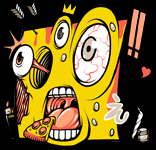Introduction to NFT Collectibles
In the ever-evolving landscape of digital innovation, Non-Fungible Tokens (NFTs) have emerged as a groundbreaking phenomenon that has taken the world by storm. Among the myriad applications of NFTs, one stands out prominently – NFT collectibles. These digital assets have revolutionized the concept of ownership, offering a new dimension to art, culture, and entertainment. This article delves into the world of NFT collectibles, exploring their origins, significance, and the impact they’ve had on the art and collectibles market.
Understanding NFT Collectibles
Non-Fungible Tokens, or NFTs, are unique digital assets that represent ownership or proof of authenticity of a specific item or piece of content. Unlike cryptocurrencies like Bitcoin or Ethereum, NFTs are not interchangeable, as each token is one-of-a-kind and cannot be exchanged on a one-to-one basis. This uniqueness is the essence of NFT collectibles.
NFT collectibles can take various forms, including digital art, virtual real estate, in-game items, and even tweets or memes. What sets them apart from traditional collectibles is their underlying blockchain technology, which provides indisputable proof of ownership, provenance, and scarcity. These attributes have transformed the way we perceive, buy, and sell collectibles in the digital age.
The Birth of NFT Collectibles
The concept of NFTs can be traced back to 2012 when J.R. Willett introduced the idea of “colored coins” on the Bitcoin blockchain, allowing users to issue tokens representing real-world assets. However, the NFT boom truly began in 2017 with the launch of CryptoKitties, a blockchain-based game that allowed players to buy, breed, and trade unique virtual cats using Ethereum-based NFTs.
CryptoKitties created a frenzy, with some digital felines selling for tens of thousands of dollars. This marked the beginning of the NFT collectibles craze, as it showcased the potential of blockchain technology to revolutionize ownership and collectibles in the digital realm.
The Significance of NFT Collectibles
Digital Ownership and Provenance
NFT collectibles provide indisputable proof of ownership and provenance. The blockchain records every transaction associated with an NFT, creating a transparent and immutable ledger. This ensures that collectors can verify the authenticity and history of their digital assets, eliminating concerns about forgeries or counterfeit items.
Empowering Creators
NFTs empower creators by allowing them to monetize their digital creations directly. Artists, musicians, and content creators can tokenize their work, retain ownership, and earn royalties whenever their NFTs are resold. This democratizes the creative industry and provides a sustainable income stream for artists.
Bridging the Physical and Digital Worlds
NFT collectibles have the potential to bridge the gap between the physical and digital worlds. Physical assets can be tokenized, creating a digital representation of the real-world item. This opens up new possibilities for cross-media experiences, where collectors can own both the physical and digital versions of a collectible.
Scarcity and Exclusivity
Scarcity is a fundamental driver of value in the collectibles market. NFTs can represent limited editions or unique items, creating a sense of exclusivity that appeals to collectors. This scarcity factor has led to NFT collectibles selling for astonishing prices, making headlines worldwide.
The Impact on Art and Culture
NFT collectibles have had a profound impact on the art and culture sectors. They have breathed new life into digital art, challenging traditional notions of ownership and value. Here are some key ways in which NFT collectibles have influenced these domains:
Digital Art Renaissance
NFTs have sparked a digital art renaissance, as artists increasingly turn to blockchain technology to create, sell, and showcase their work. This has led to the emergence of digital art marketplaces like SuperRare, Rarible, and Foundation, where collectors can acquire unique digital pieces.
Artist Autonomy
NFTs grant artists greater autonomy and control over their work. They can set the terms of sale, retain royalties on secondary sales, and connect directly with their audience. This shift in power dynamics challenges the traditional art world’s gatekeepers and intermediaries.
Cultural Impact
NFT collectibles have created cultural phenomena, with memes, GIFs, and internet art becoming highly sought-after digital collectibles. This trend highlights the intersection of digital culture and traditional art, blurring the boundaries between the two.
Museum and Gallery Engagement
Museums and galleries have also started to explore NFTs as a means of engaging with their audiences in the digital age. Some institutions have auctioned digital artworks as NFTs, while others have curated NFT exhibitions, recognizing the medium’s growing significance.
Challenges and Concerns
Despite the remarkable growth of NFT collectibles, they are not without challenges and concerns:
Environmental Concerns
The energy consumption of blockchain networks, especially Ethereum, has raised concerns about the environmental impact of NFTs. Many artists and collectors are exploring blockchain alternatives with lower carbon footprints.
Speculative Bubble
The rapid price escalation of NFTs has led to concerns about a speculative bubble in the market. Some worry that the prices of NFT collectibles are unsustainable and driven by hype.
Copyright and Plagiarism
The digital nature of NFTs raises issues related to copyright and plagiarism. There have been cases of artists’ work being tokenized without their consent, leading to legal disputes.
Scalability
Blockchain networks face scalability issues, with high transaction fees and slow processing times during peak demand. This can hinder the growth of NFT collectibles.
NFT Collectibles a Transformative Shift
NFT collectibles represent a transformative shift in the way we perceive, buy, and sell digital assets. They have revolutionized the art and collectibles market, empowering creators, bridging the physical and digital worlds, and reshaping the concept of ownership. However, they also face challenges, from environmental concerns to issues of copyright and scalability.
The world of NFT collectibles is still in its infancy, with tremendous potential for growth and innovation. As blockchain technology continues to evolve, NFTs are likely to play an increasingly prominent role in art, culture, and entertainment, redefining the boundaries of ownership and creativity in the digital age. Whether you’re a collector, artist, or simply curious about the future of digital ownership, NFT collectibles are a fascinating phenomenon worth watching closely.




















